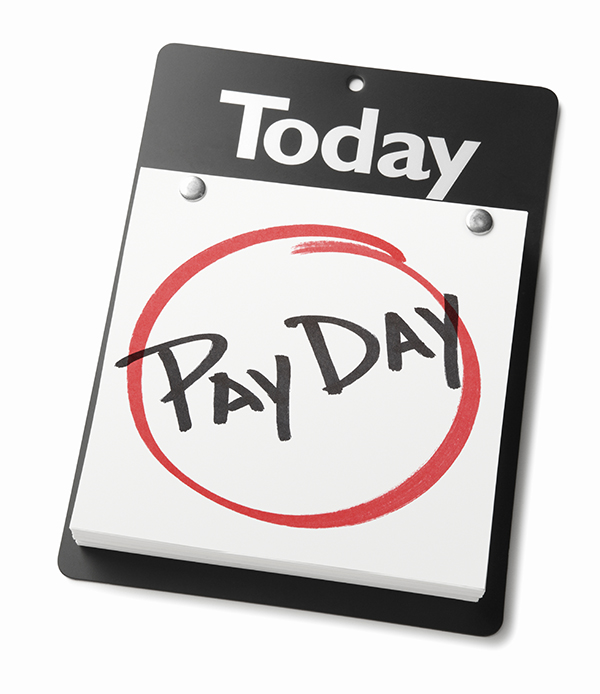
Budgeting to Get the Most Out of Your Paycheck
Let’s face it – nothing beats the feeling of checking your bank account on payday.
However, after you pay off your electricity, water and cable bills and go to buy some groceries, do you ever find yourself in the same financial position you were just two weeks ago?
If this story sounds familiar to you, NOW is the time to break the cycle and create a solid personal budget. One of the main reasons you’d want to set up a budget, is that it can help you save for a specific goal, such as a house or car. Keep in mind that it should also include allocations for savings or investments – because at any point, who knows what emergency expenses could disrupt your life.
With all that said, here’s a step-by-step on how to build out a great personal budget:
STEP 1: TRACK YOUR EXPENSES

Before you set up your budget, you will want to track your spending at least for a month or two. You can do this by keeping a tab of your receipts, bank statements and credit card bills. At the end of this exercise, you’ll be in a better position to assess where you stand financially and what expenses you can cut back on.
Here are some expenses you could track, wherever applicable to your situation:
| ONGOING | VARIABLE | IRREGULAR |
| These are expenses you pay on a regular or monthly basis that you know the cost of | These are costs that can change depending on how much you consume the particular product or service | These are costs that may arise less frequently throughout the year |
| § Mortgage or Rent
§ Strata Fee § Insurance (Home, Life, Car) § Car Lease § Utilities (JPS, NWC) § Cable & Internet § Cell Phone Bill § Subscriptions (TV or Music Streaming, Gym) § Debts (Credit Cards, Student Loans) § School Fees § Child Care § Household Help § Gardening |
§ Gas & Tolls § Groceries § Prescriptions § Sports & Entertainment § Personal Care and Household Goods § Beauty § Clothing and Shoes § Restaurants § Extra Lessons |
§ Property Taxes § Health Expenses § Birthdays & Anniversaries § Gifts § Vacations § Vet Bills § Car Servicing § School Supplies
|
STEP 2: WRITE DOWN YOUR MONTHLY INCOME
If you budget per month, here’s how to determine your monthly income, basing off the fact that there are 52 working weeks in a year:
- If you are paid weekly – Multiply your weekly pay by the number of working weeks in a year – 52. Divide this figure by 12 to get your monthly income.
- If you are paid fortnightly (every two weeks) – Multiply your fortnightly pay by the number of paychecks you would receive in a year – 26. Divide this figure by 12 to get your monthly income.
- If you earn any overtime, tips, commissions or bonuses – Estimate this extra income by dividing the extra income you earned last year by 12. Add it to your base monthly salary (if applicable) to figure out your monthly income.
* Note: When calculating monthly income, ensure you are accounting for your take-home salary after all salary deductions (i.e. NHT, NIS, PAYE) have been made.
STEP 3: IT’S TIME TO BUDGET!

One of the easiest ways to organize your budget is to apply the 10/10/80 Budgeting Rule. Based on your monthly take-home income from Step 2, you will want to divide it as follows:
- 80% goes towards SPENDING – Look back at the all the expenses you listed in Step 1. Identify the non-negotiable expenses you have to allocate for (i.e. housing, utilities, groceries, healthcare, transportation, etc.)
- 10% goes towards SAVING – At least 10% of your take-home income should be going towards putting money into your savings, investments, emergency or retirement accounts, or even repaying debts. However, for debts such as your mortgage or car loan, you will want to account for the minimum payments towards “spending” (80% category). However paying extra towards the principle of the debt would be listed in this 10% category.
- 10% goes towards GIVING – This portion of budgeting is often unaccounted for, but it will help you to live a more fulfilling life knowing that you are making a positive impact in your community. The amount you donate is a personal decision, but consider setting aside 10% towards giving. Some charities also allow you to also make recurring donations through their website, which makes it easier for you to follow through on your commitments. Remember that you do not necessarily need to give a lot to show support, because even a little can go a long way!
STEP 4: TRACK YOUR PROGRESS

As important as it is to plan out your budget, equally important is to stick to it! Keep track of your progress by creating an Excel spreadsheet, putting the Budgeted Spend for each type of expense (i.e. Entertainment, Groceries, etc.) under one column and Actual Spend under another column. Based on this, you can make adjustments where needed, such as cutting back on discretionary spending.
Although easier said than done, committing to a budget could help to break you from a paycheck to paycheck lifestyle. Every time you sit down to budget, think of your WHY – Do you want to retire early? Are you dreaming of owning a home in the country? No matter your goals, with proper budgeting, you will start to feel in control of your financial future.
You’re already taking a step in the right direction RIGHT NOW by reading about budgeting. Check out our Goals tab to arm yourself with even more knowledge!
Check out more stories like this

Pay Attention! Expert Calls Jamaicans to Heed Mental Wellness of Men and Boys
Mental health expert Dr Marlon Simpson is calling for urgent...

When Push Comes to Shove! Protect Yourself from MFA Fatigue Attacks
Multi-Factor Authentication (MFA) is one of the best ways to...

Salvation Army, Harvest Time and Cooreville Benefit from JN’s Labour Day Efforts
In observance of this year’s Labour Day, the JN Circle...